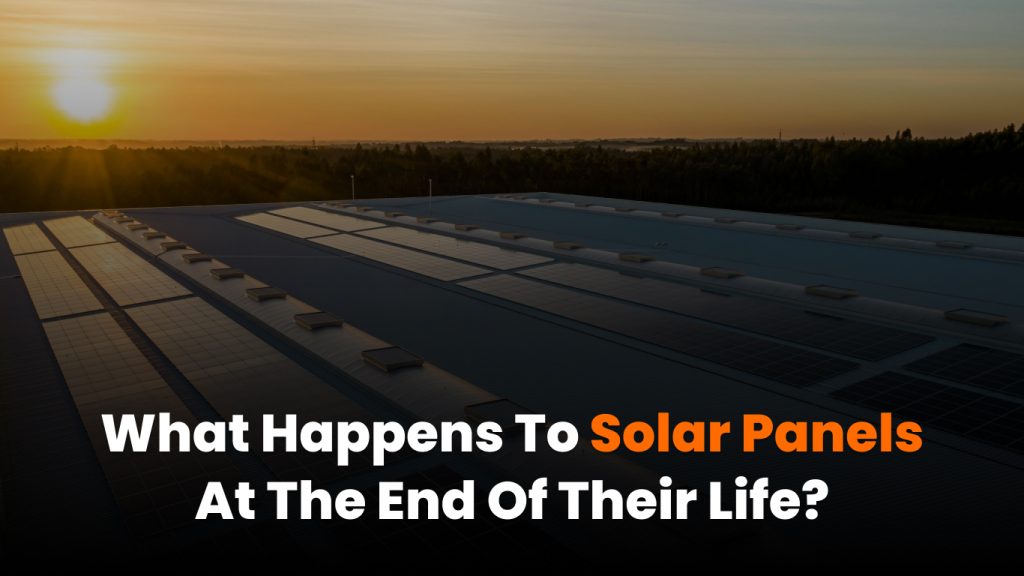Solar energy is one of the fastest-growing renewable power sources in the U.S., helping reduce reliance on fossil fuels and cut carbon emissions. But what happens when solar panels reach the end of their lifespan? Typically lasting 25 years or more, solar panels eventually become waste and must be disposed of or recycled properly. Regulations are in place to ensure safe handling, especially if they contain hazardous materials. Let’s explore the different types of solar panels, their end-of-life management, and the regulations that govern their disposal.
The growth of solar energy and its future waste challenges
Solar panels have become a dominant force in the energy market. In 2020, solar accounted for about 40% of new electricity generation capacity in the U.S., compared to just 4% in 2010. By 2030, the country is expected to have as much as one million tons of solar panel waste. By 2050, this number could rise to 10 million tons, making the U.S. one of the largest sources of end-of-life solar panels globally.
While solar panels generate electricity without harmful emissions, their eventual disposal presents environmental challenges. Managing solar panel waste properly is crucial to maintaining the sustainability of the industry.
Types of solar panels and their components
Not all solar panels are the same. There are two main types of photovoltaic (PV) panels: crystalline silicon and thin-film. Each has different materials and potential environmental impacts.
Crystalline silicon solar panels (mono- and polycrystalline)
These panels make up over 95% of today’s solar market. They are composed of silicon wafers arranged into cells, which convert sunlight into electricity. Crystalline silicon panels are durable, long-lasting, and contain valuable materials like silver and copper. However, they may also contain trace amounts of lead in the soldering material.
Thin-film solar panels
Thin-film panels use semiconductor materials like cadmium telluride (CdTe) or copper indium gallium diselenide (CIGS). These panels can be more affordable to produce but are generally less efficient than crystalline silicon panels. CdTe panels contain cadmium, which can be hazardous if not disposed of properly.
Understanding the materials used in solar panels is key to determining how they should be handled at the end of their life.
Are solar panels considered hazardous waste?
The classification of solar panel waste depends on their chemical composition. Some panels contain heavy metals, like lead and cadmium, which can be harmful in large quantities. Panels are tested using the toxicity characteristic leaching procedure (TCLP) to determine if they are hazardous.
- If a panel fails the TCLP test (meaning it leaches hazardous metals beyond regulatory limits), it must be handled as hazardous waste under the Resource Conservation and Recovery Act (RCRA).
- If a panel passes the TCLP test, it can be disposed of as non-hazardous solid waste.
Since different manufacturers use different materials, even panels from the same company may vary in classification. Homeowners should contact their local recycling agencies for guidance on proper disposal.
Regulations governing solar panel disposal
Federal and state laws regulate how solar panels must be managed when they are no longer usable. These rules ensure that hazardous waste does not harm human health or the environment.
Federal regulations under RCRA
Under the Resource Conservation and Recovery Act (RCRA), solar panels that are discarded become solid waste and may also be classified as hazardous waste if they fail the TCLP test. Hazardous waste panels must be treated, stored, or disposed of according to strict guidelines.
Certain recycling options allow panels to be handled under conditional exclusions within RCRA. For example, the transfer-based exclusion allows hazardous secondary materials to be recycled if managed correctly by third parties. This helps encourage recycling while preventing improper disposal.
Proposed universal waste rule for solar panels
In October 2023, the Environmental Protection Agency (EPA) proposed a new rule to improve the management of end-of-life solar panels and lithium batteries. The proposal aims to classify solar panels as universal waste, which would simplify handling and encourage higher recycling rates. Universal waste rules offer less restrictive requirements, making it easier for businesses and homeowners to recycle solar panels properly.
State policies on solar panel recycling
Some states have gone beyond federal requirements, enacting their own policies to manage solar panel waste effectively. Below are some notable examples:
- California – Regulates photovoltaic modules as universal waste.
- Hawaii – Implements universal waste regulations for solar panels.
- New Jersey – Established a solar panel recycling commission.
- North Carolina – Conducted studies on renewable energy equipment disposal.
- Washington – Requires manufacturers to take back and recycle end-of-life solar panels.
Since state laws vary, it’s important to check with local environmental agencies for disposal guidelines.
The importance of solar panel recycling
As the solar industry grows, so does the need for effective recycling solutions. Recycling solar panels helps:
- Recover valuable materials – Metals like silver, copper, and aluminum can be extracted and reused.
- Prevent hazardous waste contamination – Proper handling reduces the risk of heavy metals leaching into soil and water.
- Reduce landfill waste – By keeping solar panels out of landfills, recycling supports a circular economy.
Emerging technologies are improving the efficiency of solar panel recycling, making it a more viable option for the industry. Companies like Sunhub are at the forefront of sustainable energy solutions, ensuring that solar power remains an environmentally friendly choice from production to disposal.
Final thoughts
While solar panels provide clean energy for decades, they don’t last forever. Proper end-of-life management is essential to ensuring that they don’t become an environmental burden. With new regulations, growing recycling initiatives, and evolving industry standards, the future of solar panel waste management looks promising.
If you have solar panels nearing the end of their lifespan, check with your state’s environmental agency or recycling programs to explore responsible disposal options. The transition to renewable energy doesn’t stop at installation—it extends to how we handle materials when they reach the end of their useful life.

